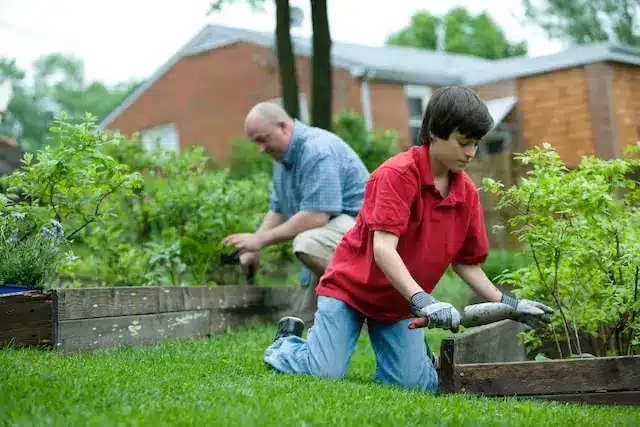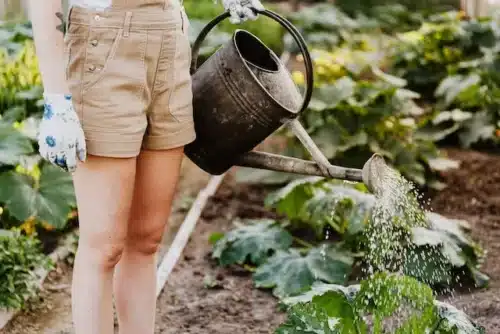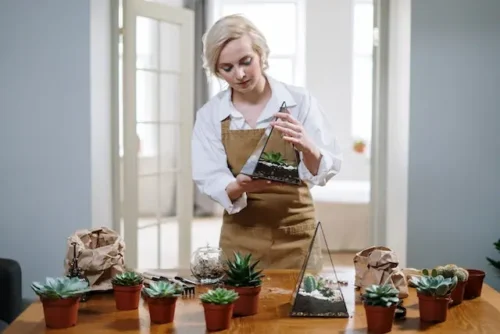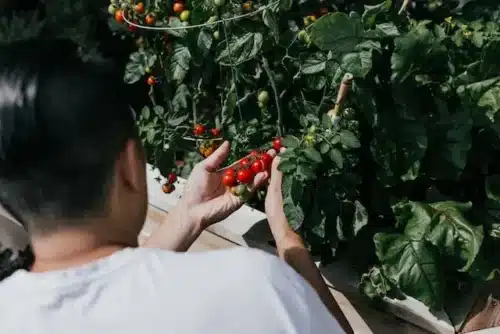
How to Grow Your Own Organic Vegetables and Herbs at Home
In a world where fresh produce is highly sought after, it might sound appealing to grow your own organic vegetables and herbs at home. After all, not only does gardening have healing powers, but the idea of nurturing a seed into a flourishing plant that can be consumed, knowing exactly what goes into its care, offers a satisfying and healthy alternative to store-bought items.
So let’s explore our step-by-step guide and ensure your organic gardening success.
A Garden Revolution: The Rise of the Home-Grown Harvest
It’s not a secret that finding healthy and quality food is becoming increasingly difficult. Supermarkets are packed with products that often lack freshness and may contain unwanted chemicals. Many have decided to grow their own to take control of their health and what they consume.

However, there’s something more to it than just being able to recreate your favorite recipes with home-grown produce. Growing your veggies and herbs helps you nurture a deeper connection and appreciation to nature in addition to a healthier lifestyle. So, without further ado, here are seven tips on how to grow your own organic vegetables and herbs at home, embracing a new way of living and eating.
Tip 1: Choose the Right Location
Selecting the right location for your vegetable garden is vital for success. Look for an area with access to 6 to 8 hours of sunlight daily. Sunlight provides energy for photosynthesis, the process by which plants grow. Consider the direction of sunlight throughout the day and ensure that taller plants won’t shade the smaller ones.
Also, consider water accessibility; a nearby water source will save time and energy. Assess the quality of the soil, checking for drainage and fertility. If possible, conduct a soil test to gauge the pH level and adjust with organic matter if necessary. Remember, the right combination of sun, water, and soil quality will set a robust foundation for your garden.
Tip 2: Select Organic Seeds and Soil
Starting with organic seeds is fundamental to organic gardening. These seeds are free from synthetic fertilizers and pesticides, promoting a more vigorous and resilient plant. Look for certified organic labels from reputable suppliers to ensure authenticity. Pair them with organic soil that is rich in nutrients and free from harmful chemicals.
Creating a compost pile from kitchen and yard waste is an excellent way to enhance your soil with natural nutrients, improving soil structure, moisture retention, and overall fertility. Using organic seeds and soil ensures that you are truly nurturing to grow an organic vegetable garden right from the very beginning.
Tip 3: Designing Your Space: Harmony Between Plants and Decorations
Creating a harmonious garden layout requires careful planning. Begin by understanding the growth patterns and space requirements of each vegetable and herb. Making room for the plants ensures they have adequate space to flourish without competing for nutrients and sunlight. Consider the mature size of each plant to prevent overcrowding, allowing for healthy airflow and easy access for maintenance.
Once you’ve planned the planting layout, focus on your garden decorations. Whether it’s bird baths, sculptures, or trellises, thoughtful placement of these decorations can add charm and functionality without hindering plant growth. Select pieces that complement the natural beauty of the garden and serve a purpose, such as supporting climbing plants or attracting beneficial insects. If you have too many decorations in your garden, make sure to make room for the plants in a strategic way. Consider what is in the way and might be put in storage, and pack your garden decorations carefully. You can keep them and rotate them when you feel like changing things up in the future. With thoughtful design, you can create a garden that seamlessly blends the beauty of your plants with artistic touches.

Tip 4: Water Wisely
Water is essential for life, but the right balance is key to a thriving garden. Invest in a watering system that offers control, such as a drip irrigation system, which provides slow, consistent moisture directly to the root zone. Hand watering with a can allows for precise application and connection to your plants.
Also, be mindful of the soil type, weather conditions, and the specific needs of each plant, adjusting your watering routine accordingly. Overwatering can lead to root rot, while underwatering may cause stress and stunted growth. Regularly check the soil moisture, and remember that early morning watering helps to minimize evaporation loss.
Tip 5: Pest Control the Organic Way
Pest control doesn’t have to involve harmful chemicals. Embrace organic methods that align with the natural ecosystem. Neem oil, garlic sprays, or insecticidal soaps are effective natural alternatives. Introduce beneficial insects like ladybugs that prey on harmful pests. Explore companion planting, where certain plants deter pests from others.
For instance, planting marigolds near tomatoes can ward off nematodes. Regular monitoring and manual removal of pests can be labor-intensive but effective. Build physical barriers like row covers to protect against larger pests. With patience and observation, you can create a balanced garden that naturally fends off pests.
Tip 6: Harvest at the Right Time
Harvesting at the right time ensures that your vegetables and herbs are at their peak flavor and nutritional value. Familiarize yourself with the visual cues of ripeness, such as color, size, and texture. Use clean, sharp tools to minimize damage, and handle the produce gently to avoid bruising. Regular harvesting often encourages more growth, so don’t hesitate to pick what’s ready.
Some herbs, for example, will continue to flourish with consistent trimming. If in doubt, taste test! Sampling a small piece can be a satisfying way to determine if your produce is ready for harvest. Enjoy the reward of your labor and share with friends and family for a fulfilling gardening experience.
Tip 7: Keep Learning and Enjoying the Process
Gardening is a lifelong learning journey filled with discoveries and joys. Embrace the process, understanding that successes and failures both provide valuable lessons. Keep a garden journal, noting what works and what doesn’t, tracking weather patterns, planting dates, and harvest yields. Seek advice from fellow gardeners, join online forums, or engage in local community gardens to learn from others.

Don’t be afraid to experiment with new plants or techniques, continually expanding your gardening horizons. Take time to observe, connect with nature, and appreciate the miracle of growth. Growing your own organic vegetables and herbs is not just about the end product; it’s about enjoying and enriching the journey along the way.
Read More: Growing A Coffee Plant As a Hobby
A Fresh Ending: Your Organic Garden Awaits
Now that you know the tips and tricks to grow your own organic vegetables and herbs, why not start your garden today? Embrace the joys of gardening and taste the difference in freshness and flavor that only home-grown produce can provide. Not only will it boost your kitchen and pantry, but growing your own garden will also boost your wellbeing!

